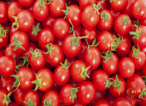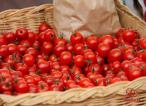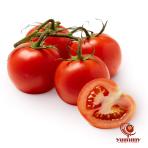Buy diy sundried tomato paste at an exceptional price
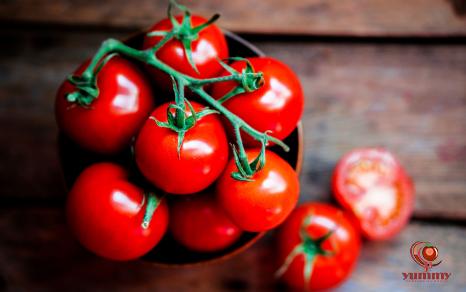
Are you a food enthusiast looking to elevate your culinary creations and add a burst of intense flavor to your dishes? Look no further than homemade sundried tomato paste. This rich and versatile condiment can enhance a wide range of recipes, from pasta sauces and dips to spreads and marinades. In this comprehensive guide, we will explore the process of making your own DIY sundried tomato paste, from selecting the best tomatoes to drying and storing the final product. Let’s dive in and unlock the secrets to creating this delicious pantry staple in the comfort of your own kitchen. The Versatility of Sundried Tomato Paste: Sundried tomato paste is a powerhouse of flavor that can instantly elevate a dish with its concentrated taste and deep umami notes. Unlike fresh tomatoes, sundried tomatoes undergo a dehydration process that intensifies their natural sweetness and adds a rich, tangy flavor profile.

.
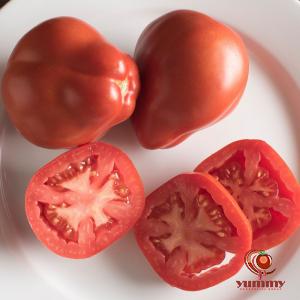 This makes sundried tomato paste a versatile ingredient that can be used in a variety of recipes, lending depth and complexity to both savory and sweet dishes. The homemade version of this condiment allows you to customize the flavor to suit your preferences, whether you prefer a smoky undertone or a hint of garlic and herbs. By making your own sundried tomato paste, you can control the quality of the ingredients, avoid preservatives and additives found in store-bought versions, and tailor the paste to your desired consistency and taste. Selecting the Right Tomatoes: The key to a successful batch of sundried tomato paste lies in choosing the right tomatoes. Look for ripe, meaty tomatoes with a high sugar content, such as Roma or San Marzano varieties. These tomatoes are ideal for sun-drying as they have fewer seeds and a thicker flesh, resulting in a more concentrated flavor after dehydration. When selecting tomatoes for sundrying, opt for ones that are free from blemishes, bruises, or signs of rot. Choose organic tomatoes if possible to avoid consuming pesticides and chemicals that may be present on conventionally grown produce. Additionally, if you have access to homegrown tomatoes or those from a local farmers’ market, the flavor and freshness will further enhance the quality of your sundried tomato paste. Preparing the Tomatoes for Drying: Before transforming your tomatoes into sundried tomato paste, you’ll need to prepare them for the drying process. Start by washing the tomatoes thoroughly under running water to remove any dirt or debris. Pat them dry with a clean kitchen towel and remove the stems using a sharp knife. Next, it’s time to slice the tomatoes for drying. For sundried tomato paste, it’s best to cut the tomatoes in half lengthwise to expose the flesh and seeds. This will help accelerate the drying process and ensure that the tomatoes develop a concentrated flavor. If you prefer a smoother paste texture, you can remove the seeds and excess moisture from the tomatoes before drying them.
This makes sundried tomato paste a versatile ingredient that can be used in a variety of recipes, lending depth and complexity to both savory and sweet dishes. The homemade version of this condiment allows you to customize the flavor to suit your preferences, whether you prefer a smoky undertone or a hint of garlic and herbs. By making your own sundried tomato paste, you can control the quality of the ingredients, avoid preservatives and additives found in store-bought versions, and tailor the paste to your desired consistency and taste. Selecting the Right Tomatoes: The key to a successful batch of sundried tomato paste lies in choosing the right tomatoes. Look for ripe, meaty tomatoes with a high sugar content, such as Roma or San Marzano varieties. These tomatoes are ideal for sun-drying as they have fewer seeds and a thicker flesh, resulting in a more concentrated flavor after dehydration. When selecting tomatoes for sundrying, opt for ones that are free from blemishes, bruises, or signs of rot. Choose organic tomatoes if possible to avoid consuming pesticides and chemicals that may be present on conventionally grown produce. Additionally, if you have access to homegrown tomatoes or those from a local farmers’ market, the flavor and freshness will further enhance the quality of your sundried tomato paste. Preparing the Tomatoes for Drying: Before transforming your tomatoes into sundried tomato paste, you’ll need to prepare them for the drying process. Start by washing the tomatoes thoroughly under running water to remove any dirt or debris. Pat them dry with a clean kitchen towel and remove the stems using a sharp knife. Next, it’s time to slice the tomatoes for drying. For sundried tomato paste, it’s best to cut the tomatoes in half lengthwise to expose the flesh and seeds. This will help accelerate the drying process and ensure that the tomatoes develop a concentrated flavor. If you prefer a smoother paste texture, you can remove the seeds and excess moisture from the tomatoes before drying them.
..
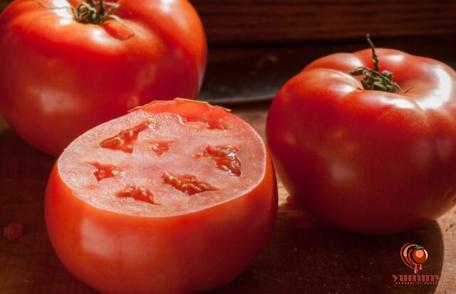 Drying the Tomatoes: The traditional method of sun-drying tomatoes involves placing the sliced tomatoes on drying racks or trays and exposing them to direct sunlight for several days. However, if you prefer a more controlled environment, you can use an oven or food dehydrator to dry the tomatoes. To sun-dry tomatoes, arrange the sliced tomatoes on a clean, non-reactive surface, such as a baking sheet or wire rack. Place the tomatoes in a sunny, well-ventilated area, ensuring that they are not overcrowded to allow air circulation around each piece. Cover the tomatoes with a fine mesh or cheesecloth to protect them from insects and debris while they dry. If you’re using an oven to dry the tomatoes, preheat it to a low temperature, around 150-200°F (65-95°C). Place the sliced tomatoes on baking sheets lined with parchment paper and bake them for several hours, rotating the trays occasionally to ensure even drying. Keep a close eye on the tomatoes to prevent them from burning or overdrying. For those using a food dehydrator, follow the manufacturer’s instructions for drying fruits or vegetables. Arrange the sliced tomatoes on the dehydrator trays, leaving space between each piece for air circulation. Set the temperature to around 135-140°F (57-60°C) and allow the tomatoes to dry for approximately 8-12 hours, depending on the desired consistency. Blending the Sundried Tomatoes: Once the tomatoes are fully dried and have a leathery texture, it’s time to transform them into a smooth paste. There are several methods for blending sundried tomatoes, depending on the equipment you have available and the desired consistency of the paste. If you prefer a rustic, chunky paste, you can use a mortar and pestle or a food processor to crush the dried tomatoes into a coarse mixture. For a smoother texture, a high-speed blender or immersion blender can be used to achieve a velvety consistency. When blending sundried tomatoes into a paste, you can customize the flavor by adding various seasonings and ingredients. Garlic, basil, oregano, red pepper flakes, olive oil, and balsamic vinegar are popular additions that enhance the taste of the paste and create a depth of flavors.
Drying the Tomatoes: The traditional method of sun-drying tomatoes involves placing the sliced tomatoes on drying racks or trays and exposing them to direct sunlight for several days. However, if you prefer a more controlled environment, you can use an oven or food dehydrator to dry the tomatoes. To sun-dry tomatoes, arrange the sliced tomatoes on a clean, non-reactive surface, such as a baking sheet or wire rack. Place the tomatoes in a sunny, well-ventilated area, ensuring that they are not overcrowded to allow air circulation around each piece. Cover the tomatoes with a fine mesh or cheesecloth to protect them from insects and debris while they dry. If you’re using an oven to dry the tomatoes, preheat it to a low temperature, around 150-200°F (65-95°C). Place the sliced tomatoes on baking sheets lined with parchment paper and bake them for several hours, rotating the trays occasionally to ensure even drying. Keep a close eye on the tomatoes to prevent them from burning or overdrying. For those using a food dehydrator, follow the manufacturer’s instructions for drying fruits or vegetables. Arrange the sliced tomatoes on the dehydrator trays, leaving space between each piece for air circulation. Set the temperature to around 135-140°F (57-60°C) and allow the tomatoes to dry for approximately 8-12 hours, depending on the desired consistency. Blending the Sundried Tomatoes: Once the tomatoes are fully dried and have a leathery texture, it’s time to transform them into a smooth paste. There are several methods for blending sundried tomatoes, depending on the equipment you have available and the desired consistency of the paste. If you prefer a rustic, chunky paste, you can use a mortar and pestle or a food processor to crush the dried tomatoes into a coarse mixture. For a smoother texture, a high-speed blender or immersion blender can be used to achieve a velvety consistency. When blending sundried tomatoes into a paste, you can customize the flavor by adding various seasonings and ingredients. Garlic, basil, oregano, red pepper flakes, olive oil, and balsamic vinegar are popular additions that enhance the taste of the paste and create a depth of flavors.
…
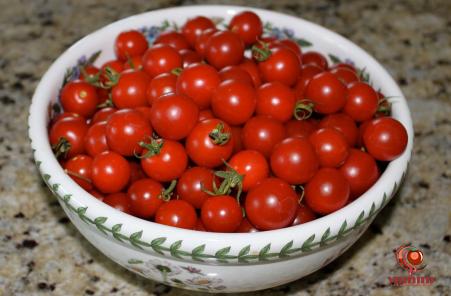 Experiment with different combinations to create a sundried tomato paste that suits your palate. Storing and Preserving Sundried Tomato Paste: To preserve the homemade sundried tomato paste and enjoy its vibrant flavor for an extended period, proper storage is essential. Once you’ve blended the sundried tomatoes into a smooth paste, transfer it to clean, airtight containers such as glass jars or plastic containers with tight-fitting lids. Before sealing the containers, drizzle a thin layer of olive oil over the surface of the paste to create a protective barrier and prevent air from reaching the paste. This will help maintain the freshness and flavor of the sundried tomato paste and prevent it from spoiling. Store the containers of sundried tomato paste in the refrigerator for up to two weeks, or freeze them for longer-term storage. When freezing the paste, divide it into smaller portions and place them in ice cube trays or freezer-safe bags for easy portioning and thawing when needed. Using Sundried Tomato Paste in Recipes: Now that you have your homemade sundried tomato paste ready, it’s time to unleash its culinary potential in a variety of recipes. From pasta dishes and pizza toppings to soups, stews, and sauces, sundried tomato paste can add depth and complexity to your favorite meals. Here are some creative ways to incorporate sundried tomato paste into your recipes: 1. Pasta Sauce: Stir sundried tomato paste into your favorite pasta sauce for a burst of intense flavor. It pairs well with creamy sauces, tomato-based sauces, and pesto variations. 2. Bread and Pizza: Spread sundried tomato paste on homemade bread or use it as a flavorful base for pizza toppings. Combine it with mozzarella, basil, and olives for a Mediterranean twist. 3. Marinades and Dressings: Whisk sundried tomato paste into marinades for meats, poultry, or tofu, or use it as a savory addition to salad dressings and dips. 4. Stuffed Vegetables: Mix sundried tomato paste with breadcrumbs, herbs, and cheese to create a flavorful filling for stuffed peppers, mushrooms, or zucchinis. 5. Appetizers and Spreads: Serve sundried tomato paste as a dip for bread, crackers, or vegetable sticks, or use it as a spread for sandwiches, wraps, and bruschetta. Experiment with different recipes and cooking techniques to explore the versatility of sundried tomato paste and create delicious, memorable meals that showcase its robust flavor profile.
Experiment with different combinations to create a sundried tomato paste that suits your palate. Storing and Preserving Sundried Tomato Paste: To preserve the homemade sundried tomato paste and enjoy its vibrant flavor for an extended period, proper storage is essential. Once you’ve blended the sundried tomatoes into a smooth paste, transfer it to clean, airtight containers such as glass jars or plastic containers with tight-fitting lids. Before sealing the containers, drizzle a thin layer of olive oil over the surface of the paste to create a protective barrier and prevent air from reaching the paste. This will help maintain the freshness and flavor of the sundried tomato paste and prevent it from spoiling. Store the containers of sundried tomato paste in the refrigerator for up to two weeks, or freeze them for longer-term storage. When freezing the paste, divide it into smaller portions and place them in ice cube trays or freezer-safe bags for easy portioning and thawing when needed. Using Sundried Tomato Paste in Recipes: Now that you have your homemade sundried tomato paste ready, it’s time to unleash its culinary potential in a variety of recipes. From pasta dishes and pizza toppings to soups, stews, and sauces, sundried tomato paste can add depth and complexity to your favorite meals. Here are some creative ways to incorporate sundried tomato paste into your recipes: 1. Pasta Sauce: Stir sundried tomato paste into your favorite pasta sauce for a burst of intense flavor. It pairs well with creamy sauces, tomato-based sauces, and pesto variations. 2. Bread and Pizza: Spread sundried tomato paste on homemade bread or use it as a flavorful base for pizza toppings. Combine it with mozzarella, basil, and olives for a Mediterranean twist. 3. Marinades and Dressings: Whisk sundried tomato paste into marinades for meats, poultry, or tofu, or use it as a savory addition to salad dressings and dips. 4. Stuffed Vegetables: Mix sundried tomato paste with breadcrumbs, herbs, and cheese to create a flavorful filling for stuffed peppers, mushrooms, or zucchinis. 5. Appetizers and Spreads: Serve sundried tomato paste as a dip for bread, crackers, or vegetable sticks, or use it as a spread for sandwiches, wraps, and bruschetta. Experiment with different recipes and cooking techniques to explore the versatility of sundried tomato paste and create delicious, memorable meals that showcase its robust flavor profile.


 Phone number:
Phone number:  WhatsApp Response:
WhatsApp Response:

